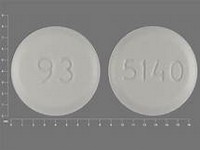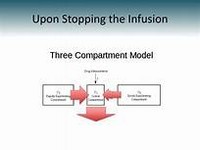Cisplatin

Cisplatin
CLINICAL USE
Antineoplastic agent:Testicular and metastatic ovarian tumours Cervical tumours Lung carcinoma Bladder cancerDOSE IN NORMAL RENAL FUNCTION
Single agent therapy: 50–120 mg/m 2 as a single dose every 3–4 weeks or 15–20 mg/m2 daily for 5 days every 3–4 weeksCombination therapy: 20 mg/m 2 and upward, every 3–4 weeksPHARMACOKINETICS
DOSE IN RENAL IMPAIRMENT
GFR (mL/MIN)
DOSE IN PATIENTS UNDERGOING RENAL REPLACEMENT THERAPIES
IMPORTANT DRUG INTERACTIONS
Potentially hazardous interactions with other drugsAminoglycosides: increased risk of nephrotoxicity and possibly ototoxicity with aminoglycosides, capreomycin, polymyxins or vancomycinAntipsychotics: avoid concomitant use with clozapine, increased risk of agranulocytosisCytotoxics: increased pulmonary toxicity with bleomycin and methotrexateADMINISTRATION
Reconstition
Water for injection to form a 1 mg/mL solutionRoute
IV infusion
Rate of Administration
Over 6–8 hoursComments
Pre-treatment hydration, with 1–2 litres of fluid infused for 8–12 hours prior to cisplatin dose, is recommended in order to initiate diuresis. The drug is then well diluted in 2 litres sodium chloride 0.9% or glucose-saline solutions to ensure hydration and maintain urine output. Adequate hydration must be maintained during the following 24 hours, with potassium and magnesium supplementation given as necessaryCisplatin solutions react with aluminium – do not use equipment containing aluminiumOTHER INFORMATION
Dose modification depends not only on the degree of renal dysfunction, but also on the intended dose and the therapeutic end-point. In general, any patient with a GFR<70 mL/min should be highlighted as ‘at risk’ from cisplatin renal toxicity. Kintzel PE, Dorr RT. Anticancer drug renal toxicity and elimination: dosing guidelines for altered renal function. Cancer Treat Rev. 1995; 21: 33–64GFR (mL/min) Dose<60 100%50–60 75%40–50 50%<40 AvoidBennett <50 100%10–50 75%
See how to identify renal failure stages according to GFR calculation
See how to diagnose irreversible renal disease
Home








